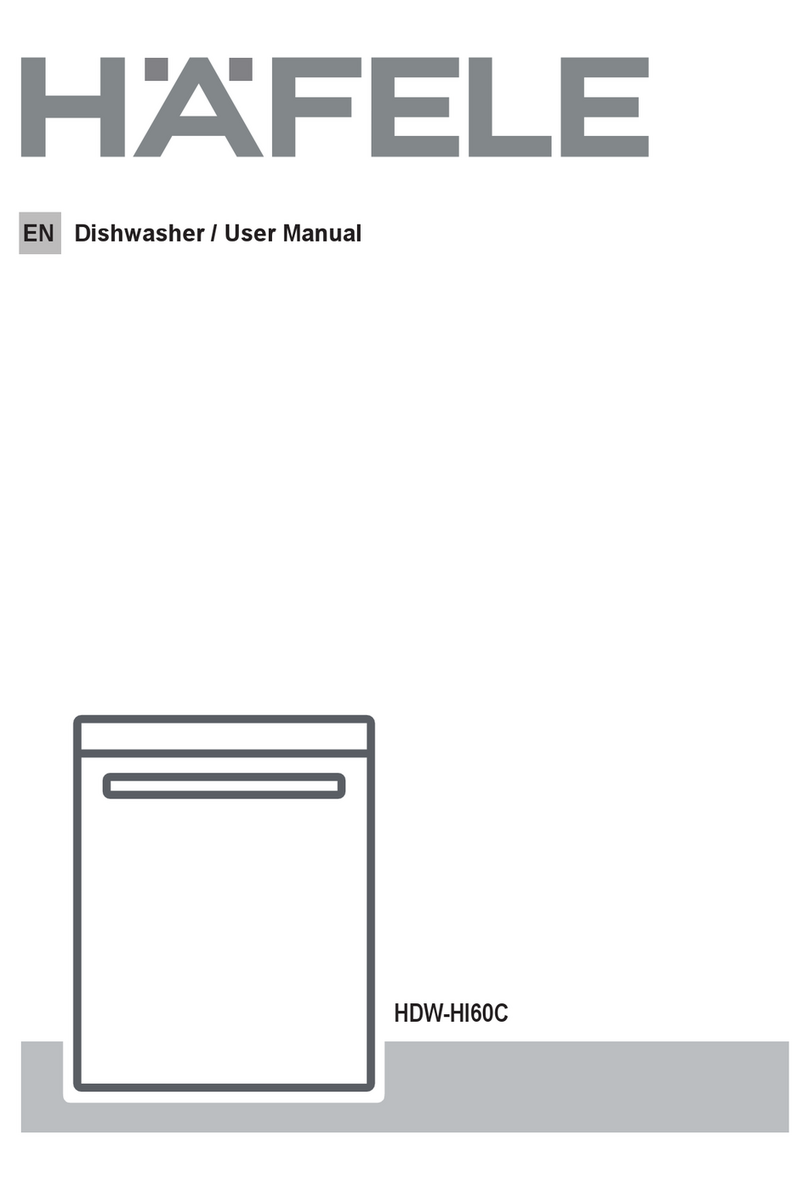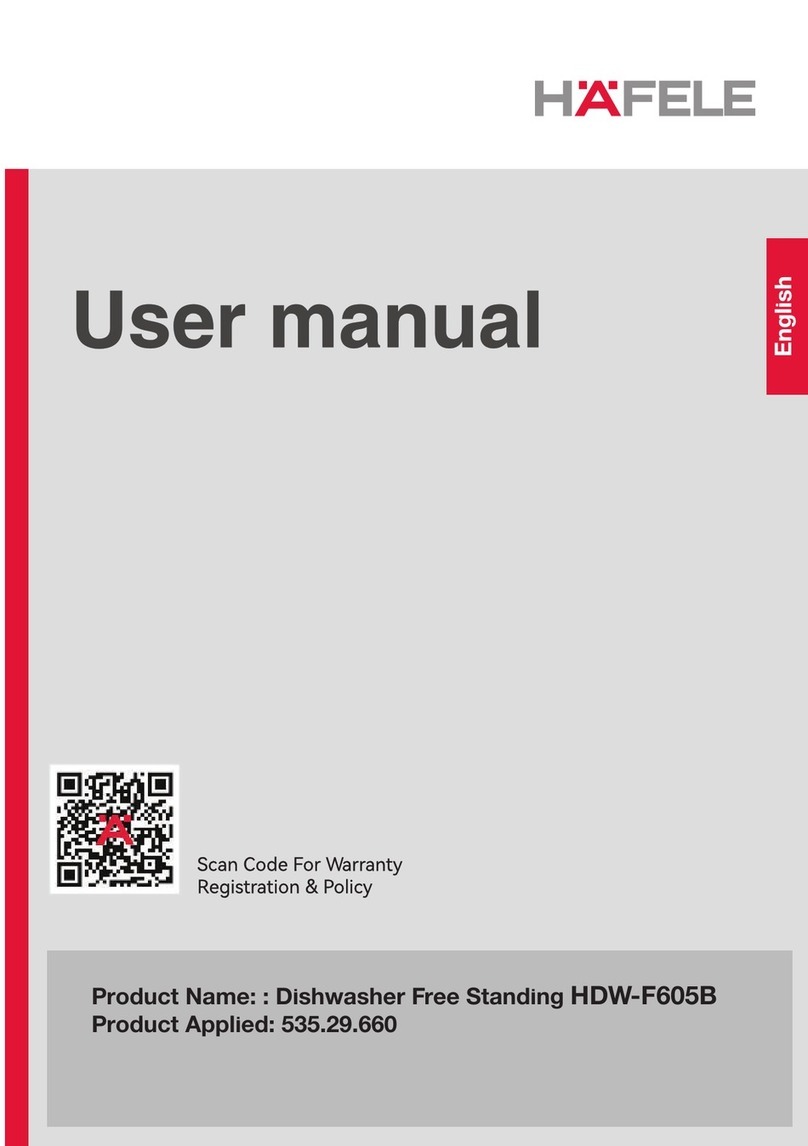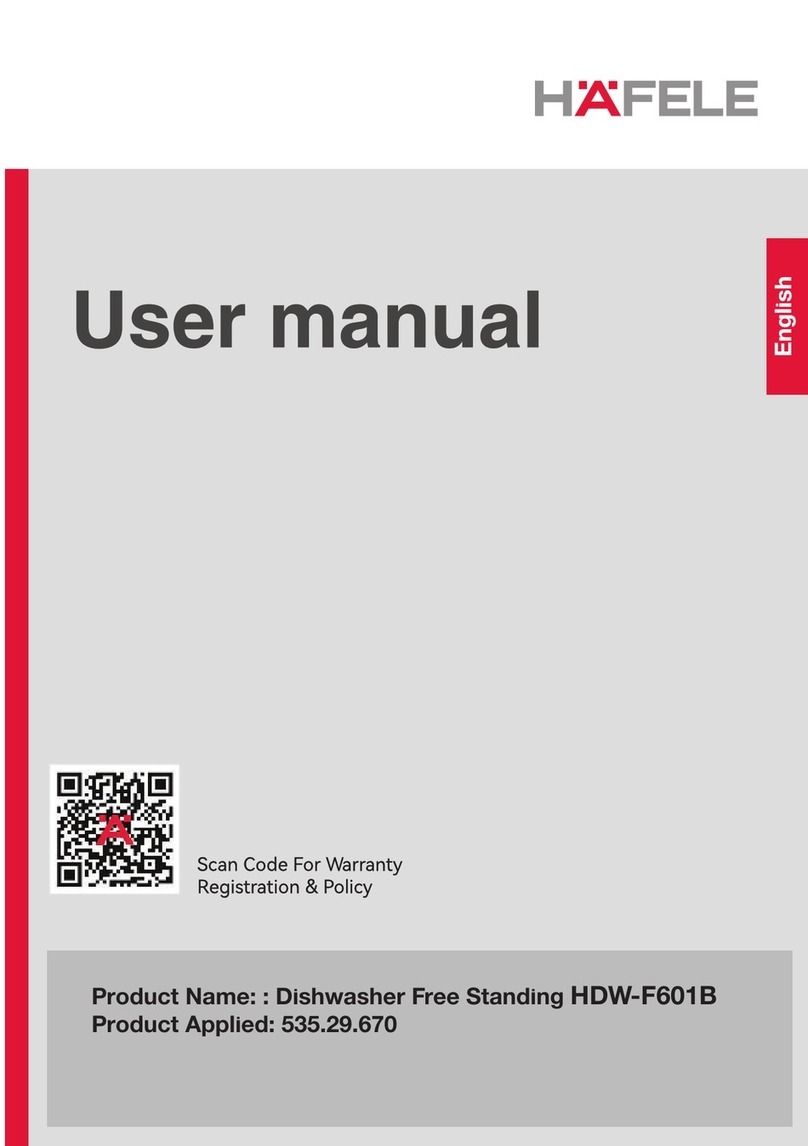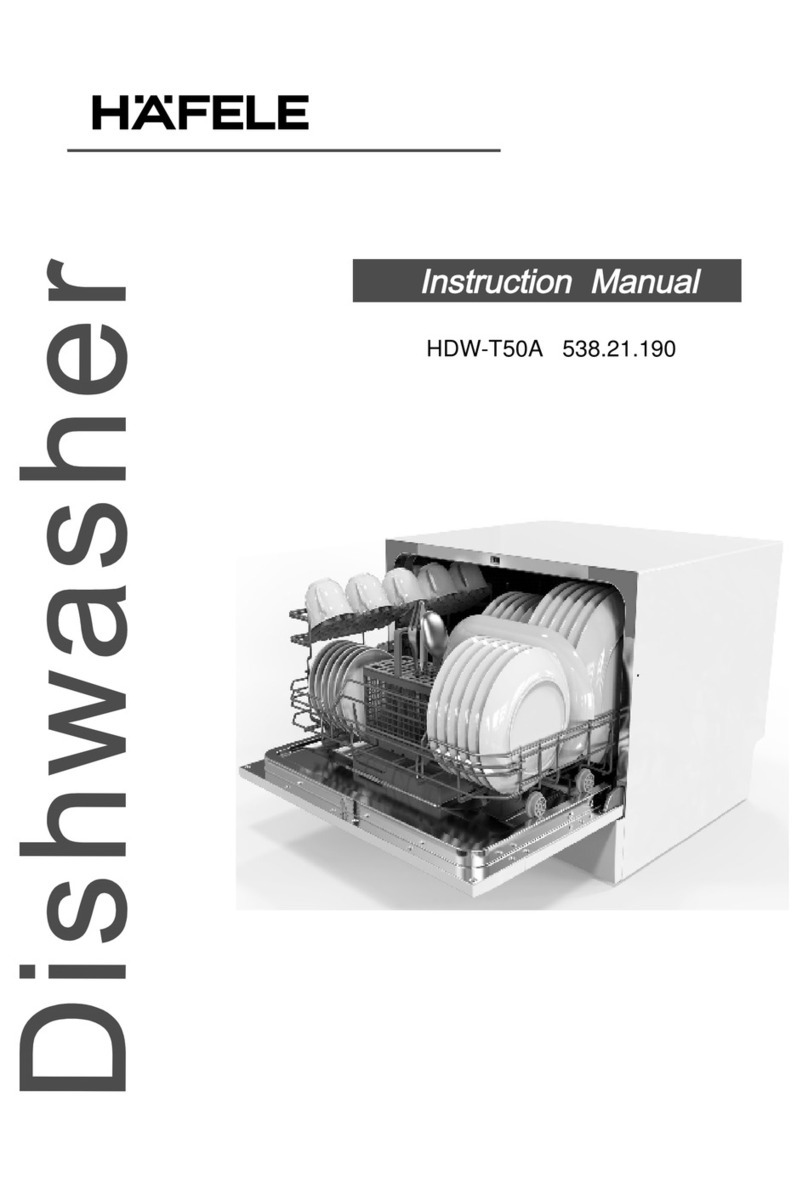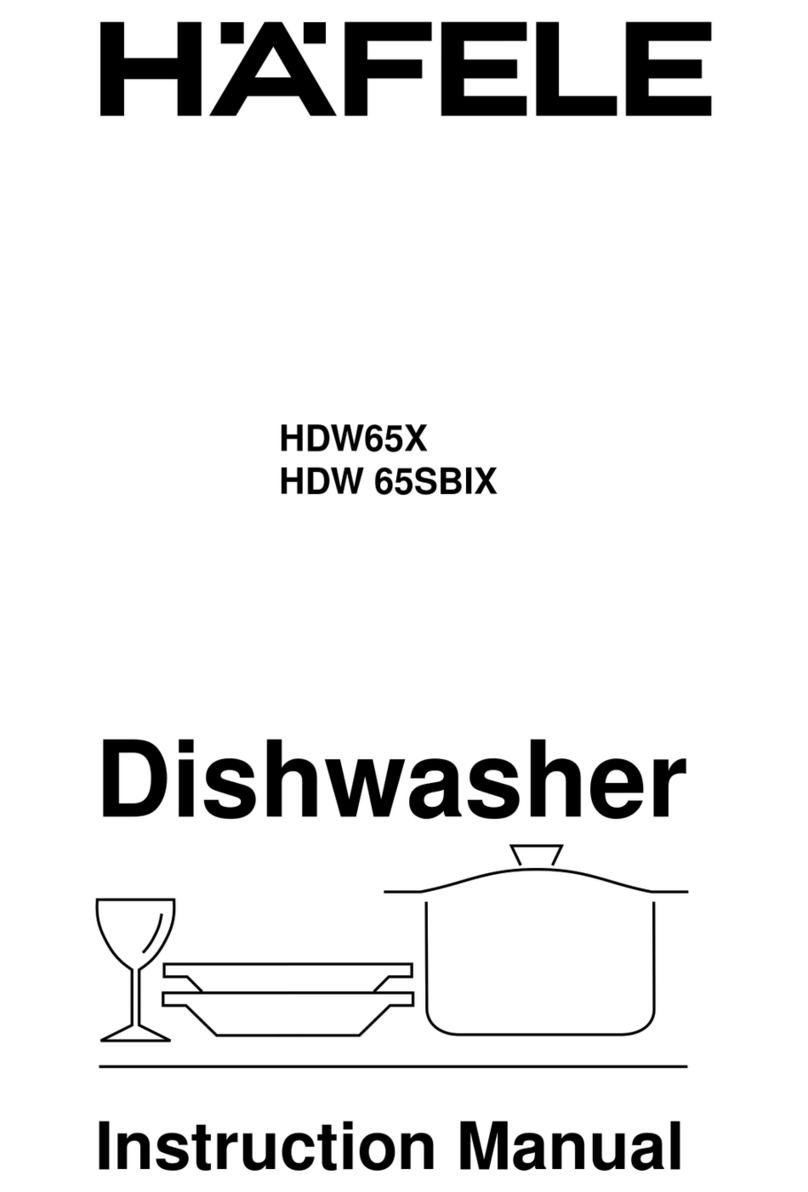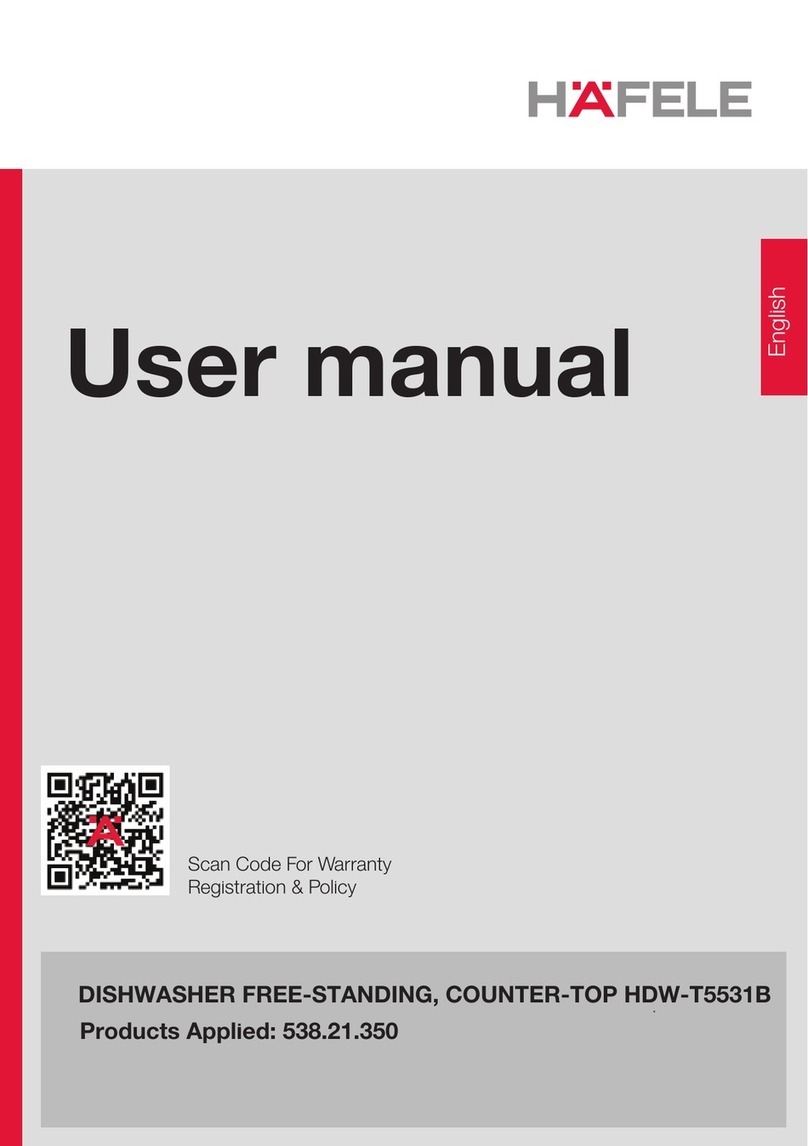
4
SAFETY INSTRUCTIONS
1. SAFETY INSTRUCTIONS
‼
WARNING: When using your dishwasher, follow the precautions listed below:
•Installation and repair can only be carried out by a qualified technician
•This appliance is intended to be used in household and similar applications such as:
- staff kitchen areas in shops, offices and other working environments;
- farm houses;
- by clients in hotels, motels and other residential type environments;
- bed and breakfast type environments.
•This appliance can be used by children aged from 8 years and above and persons with
reduced physical, sensory or mental capabilities or lack of experience and knowledge if they
have been given supervision or instruction concerning use of the appliance in a safe way and
understand the hazards involved.
•Children shall not play with the appliance. Cleaning and user maintenance shall not be done
by children without supervision. (For EN60335-1)
•This appliance is not intended for use by persons (including children ) with reduced physical,
sensory or mental capabilities, or lack of experience and knowledge, unless they have been
given supervision or instruction concerning use of the appliance by a person responsible for their
safety. (For IEC60335-1 ) Packaging material could be dangerous for children!
•This appliance is for indoor household use only.
•To protect against the risk of electrical shock, do not immerse the unit, cord or plug in water
or other liquid. Please unplug before cleaning and performing maintenance on the appliance.
•Use a soft cloth moistened with mild soap, and then use a dry cloth to wipe it again.
Earthing Instructions
•This appliance must be earthed. In the event of a malfunction or breakdown, earthing will
reduce the risk of an electric shock by providing a path of least resistance of electric current.
This appliance is equipped with an earthing conductor plug.
•The plug must be plugged into an appropriate outlet that is installed and earthed in
accordance with all local codes and ordinances.
•Improper connection of the equipment-earthing conductor can result in the risk of an electric
shock. Check with a qualified electrician or service representative if you are in doubt whether the
appliance is properly grounded.
•Do not modify the plug provided with the appliance; If it does not fit the outlet.
•Have a proper outlet installed by a qualified electrician.
•Do not abuse, sit on, or stand on the door or dish rack of the dishwasher.
•Do not operate your dishwasher unless all enclosure panels are properly in place.
•Open the door very carefully if the dishwasher is operating, there is a risk of water squirting
out. Do not place any heavy objects on or stand on the door when it is open. The appliance
could tip forward.


